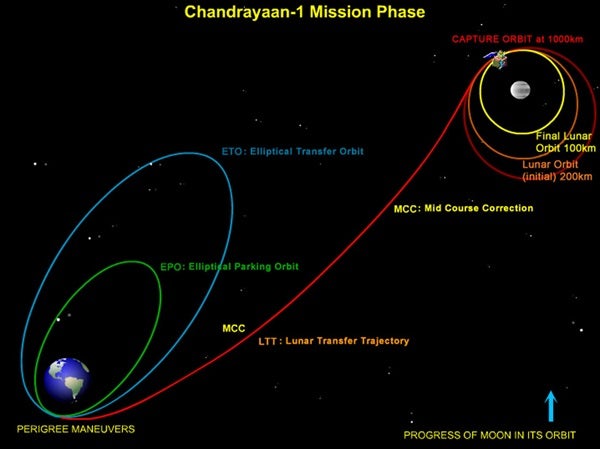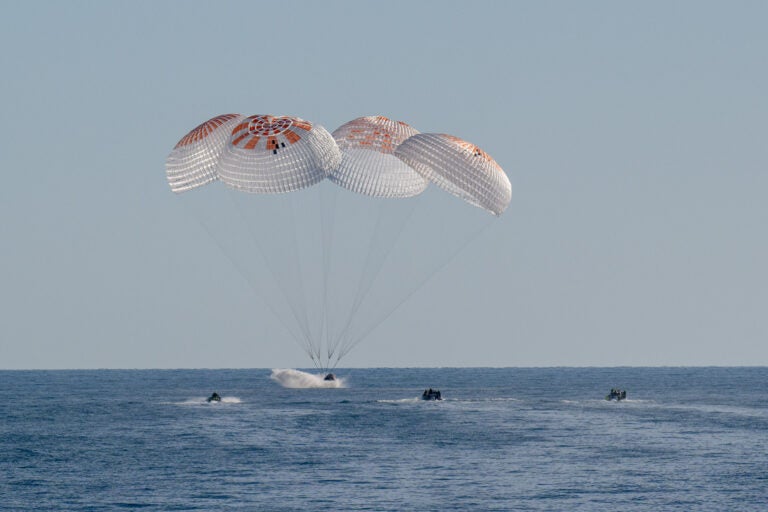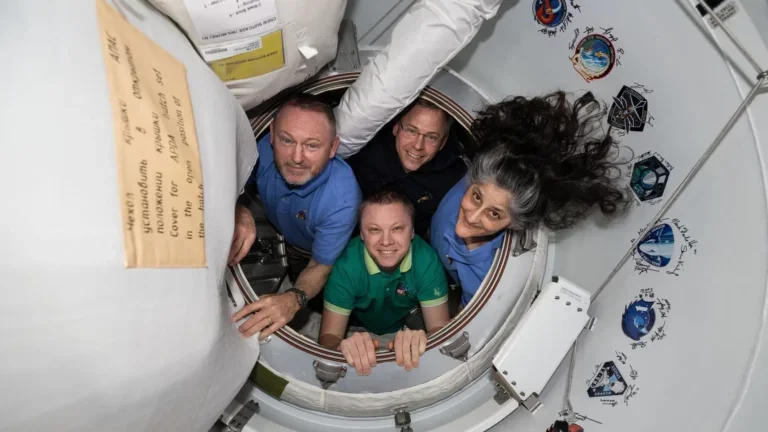Chandrayaan-1, the Indian Space Research Organization’s (ISRO) lunar orbiter, was captured into orbit around the Moon November 8. One day later, the spacecraft performed a maneuver that lowered the closest point of its orbit to 124 miles (200 kilometers) above the lunar surface.
The spacecraft’s liquid-fuel propelled engine fired at 6:10 A.M. EST (16:51 Indian Standard Time) when it was at a distance of about 311 miles (500 km) from the Moon. This operation reduced the spacecraft’s velocity and enabled the Moon’s gravitational field to capture Chandrayaan-1 into orbit. In this configuration, the orbit’s point closest to the lunar surface was at 313 miles (504 km), and the spacecraft circled the Moon in 11 hours.
The Chandrayaan-1 Spacecraft Control Centre at ISRO’s Telemetry, Tracking and Command Network at Bangalore executed this orbit insertion maneuver. The performance of all Chandrayaan-1 systems registered as normal.
November 9, at 9:33 A.M. EST (20:03 Indian Standard Time), the spacecraft’s engine fired for about 57 seconds, reducing the orbit’s point closest to the lunar surface to 124 miles (200 km) while the farthest point remained unchanged at 4,662 miles (7,502 km). In this elliptical orbit, Chandrayaan-1 takes about 10.5 hours to circle the Moon once.
During the next few days, the altitude of the spacecraft’s orbit around the Moon will be reduced in steps to achieve a final 62-mile (100-km) polar lunar orbit. Chandrayaan-1 will release the Moon Impact Probe (MIP) to hit the lunar surface, after which point the other instruments on board will be turned on.
Chandrayaan-1 was launched October 22 from India’s spaceport at Satish Dhawan Space Centre SHAR, Sriharikota. The launch placed the spacecraft in an elliptical orbit around Earth.
In the past 2 weeks, the Terrain Mapping Camera (TMC), one of the spacecraft’s 11 scientific instruments successfully captured images on two separate occasions.










